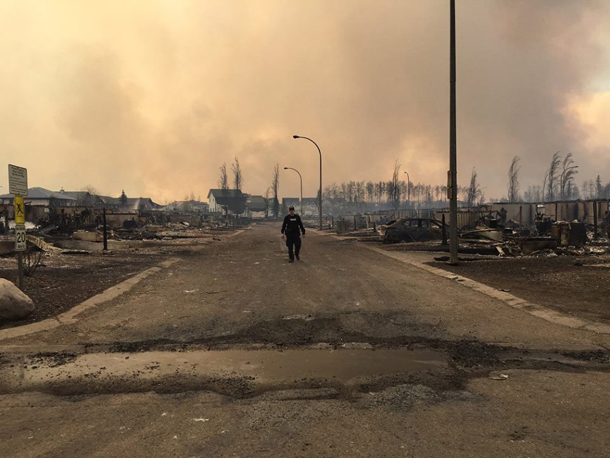Fort Mac Blaze: Brace for New Era of Infernos
What’s turning northern forests into tinder? Biggest reason is climate change, but that’s not all.
A police officer surveys smoldering devastation wrought by wildfire in Fort McMurray on May 5, 2016. Source: RCMP Alberta.
Earlier this week, Darby Allen, the regional fire chief for the area, minced no words when he was asked what might happen now that more than 1,600 homes have been destroyed.
”This is a really dirty fire,” he said. ”There are certainly areas within the city which have not been burned, but this fire will look for them and it will take them.”
The media line now is that fire experts saw this coming five years ago when one of the Flattop Complex fires tore through the Alberta town of Slave Lake in 2011, forcing everyone to leave on a moment’s notice. A report released shortly after predicted that something similar could happen again, and its authors made 21 recommendations to prepare for the possibility.
But fire scientists and fire managers actually saw this coming back in 2009 when 70 of them gathered in Victoria to address the issue of climate change and what impact it was going to have on the forest fire situation in Canada. Each one of them was already well aware that fires were burning bigger, hotter, faster, and in more unpredictable ways than ever before.
”We’re exceeding thresholds all the time,” said Mike Flannigan, who was at the time a research scientist with the Canadian Forest Service. ”We’d better start acting soon.”
